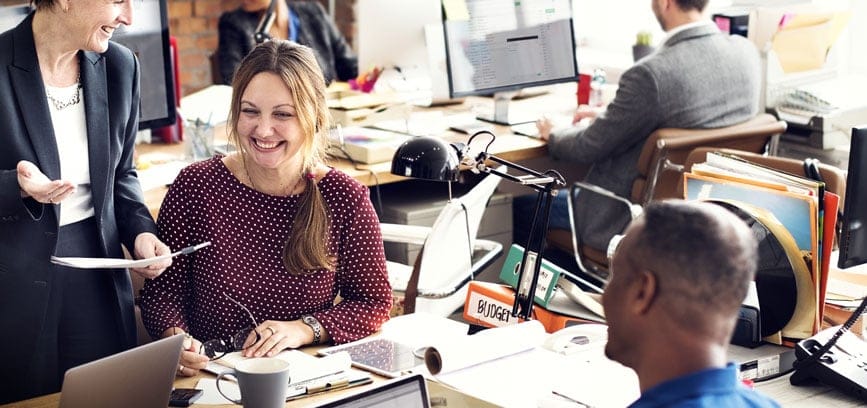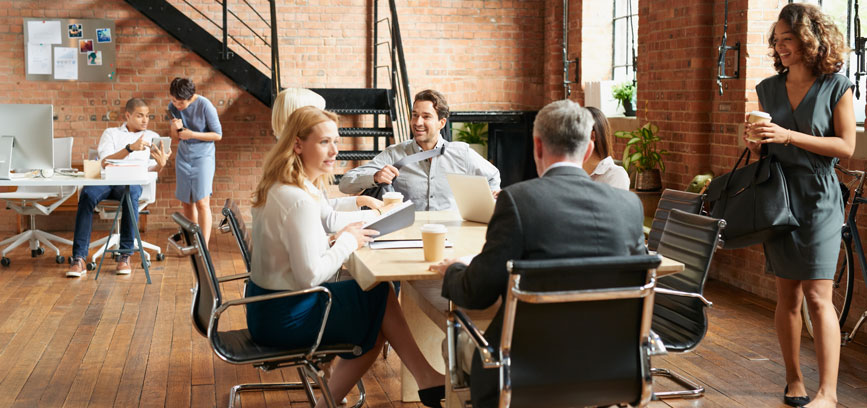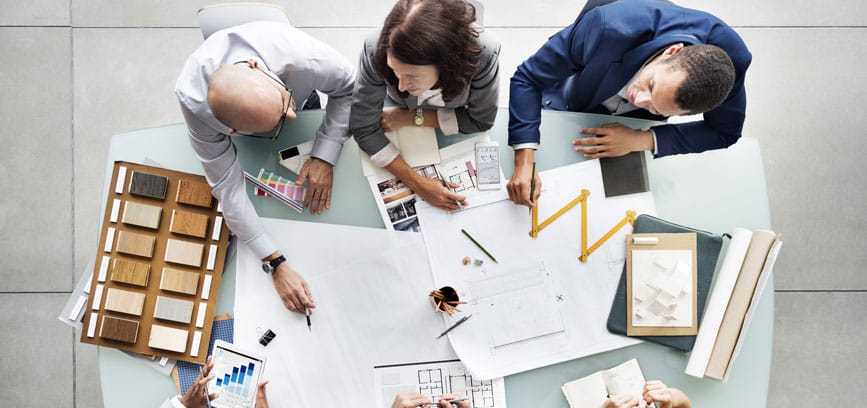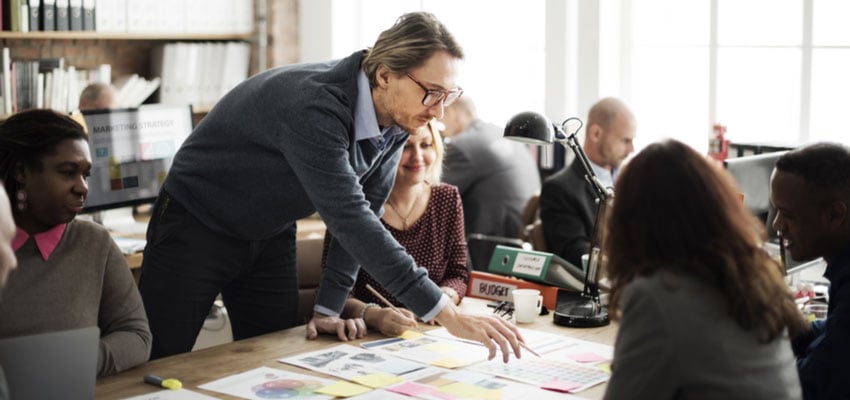Improving employee health and wellbeing through workplace design
If you want your business to perform at its peak, then you need to ensure your employees can perform at their best, and this means looking after their health and wellbeing.
It’s important to bear in mind that employee health and wellness is not just about physical health, but also emotional and social wellbeing.
Prioritising employees’ health and wellbeing can have myriad benefits for your business, including:
- greater productivity
- reductions in work-related sickness and injuries
- lower workers’ compensation costs
- a decrease in absenteeism and staff turnover
- improved employee satisfaction
- enhanced corporate image
If improving employee health and wellbeing is an important goal for your business, one of the first things to look at is the environment in which your employees spend up to 40 hours (or more) a week.
Here are 5 ways you can improve employee health and wellbeing through your workplace design.
Encourage activity
You might have heard that “sitting is the new smoking”. Doctors have found that sedentary behaviour can be highly detrimental to health, leading to an increased risk of chronic health problems, such as heart disease, diabetes and cancer.
That’s why forward-thinking organisations are implementing ways to encourage movement and activity throughout the day. This could be by installing sit-stand desks, to encourage employees to stand more throughout the day; having standing meeting rooms; or even removing small personal printers and installing large shared printers, so workers have an excuse to get up on a regular basis.
Integrate nature, sunlight and fresh air
There’s ample evidence that integrating nature, sunlight and fresh air into the workplace can have positive effects on health and wellbeing, thereby boosting productivity. Indoor plants, for example, have been shown to lift people’s moods and even remove harmful chemical compounds in the air.
There’s also data that suggests air quality may have a much bigger impact than once thought. Harvard University professor Joseph Allen performed a study that showed that workers in ‘green’ buildings with enhanced ventilation scored 101% higher than those in conventional buildings.
Sunlight can also have a positive effect on workers’ productivity, with one study finding that workers who were exposed to more daylight during the working week slept longer, did more physical activity and had better quality of life than workers who had little exposure to daylight.
Consider how these elements could be integrated into your next workplace design. Could you, for example, install a ‘living wall’ to help decrease stress levels? Could you seat workers closer to windows so they get more exposure to daylight? Could you install an air ventilation system to ensure workers get plenty of fresh air throughout the day?
Promote rest and relaxation
Often at work, our days are so jam-packed that there’s barely time for a bathroom break, let alone a decent lunch. But having employees working as hard as they possibly can does not actually lead to more productivity. On the contrary, in fact – it can lead to chronic stress and employee burnout, resulting in lower levels of productivity.
That’s why it’s important that employees take regular breaks in order to recharge, clear their head and strengthen their focus.
If employees don’t have an appealing space where they can take a load off, it sends a message that taking breaks is frowned upon by upper management. Environmental cues, therefore, are a powerful way to encourage this healthy behaviour. Revamp your break area(s) by providing a variety of comfortable seating options, and using home- or café-inspired touches to make the space feel more inviting.
Factor in noise and acoustics
When considering a workplace redesign, it can be easy to get heavily focused on the visual aspects. But what about the acoustics?
Excessive noise levels at work can have a dramatic effect on employee health and wellbeing, causing disruptions and poor performance. One study has even shown it can lead to an increase in heart rate and blood pressure, resulting in more staff absenteeism. Workplace design that factors in noise management, therefore, can do much to contribute to workers’ comfort.
For example, if you are planning on an open-plan layout, you may want to help mitigate any potential interferences by installing closed rooms where people can conduct phone calls. If the space is large and potentially echo-ey, you could consider ways to absorb and block any excessive noise, whether it’s by utilising high-performance acoustic tiles or being mindful about how you use partitions, walls and windows.
Consider materials
We’ve already talked about the importance of air quality in a work environment – but did you know that just about everything around you could potentially be contributing to poor air quality?
Your carpet, paint, furnishings and office equipment (such as photocopiers) could all be emitting volatile organic compounds, or VOCs. VOCs have been shown to impair cognitive ability, including the ability to make complicated decisions, to focus and to problem solve. They can even potentially lead to health effects such as headaches, nausea and fatigue.
A workplace design should take into account workers’ exposure to VOCs by, for example, using low-VOC-emitting materials or being mindful about where office equipment like printers and photocopiers are located.
By putting employee health and wellbeing at the core of your next workplace design, you can not only have a more inviting and comfortable place to work, but you can also reap maximum ROI through boosted productivity levels. It’s a win-win!
A workplace design partner can help you develop a workplace design strategy that delivers maximum ROI. To help you find the perfect one for your business, check out our free ebook How to Choose the Right Workplace Design Partner. Download it now!







